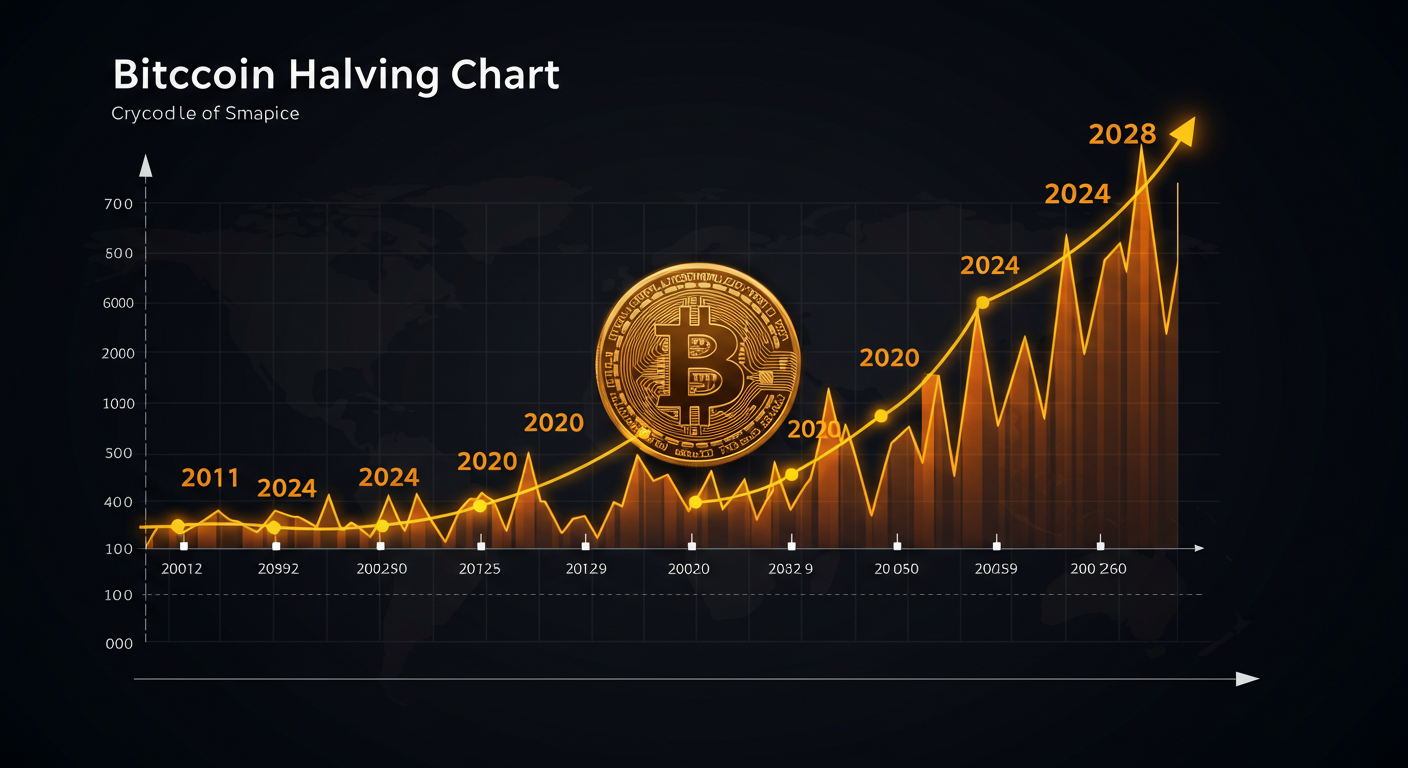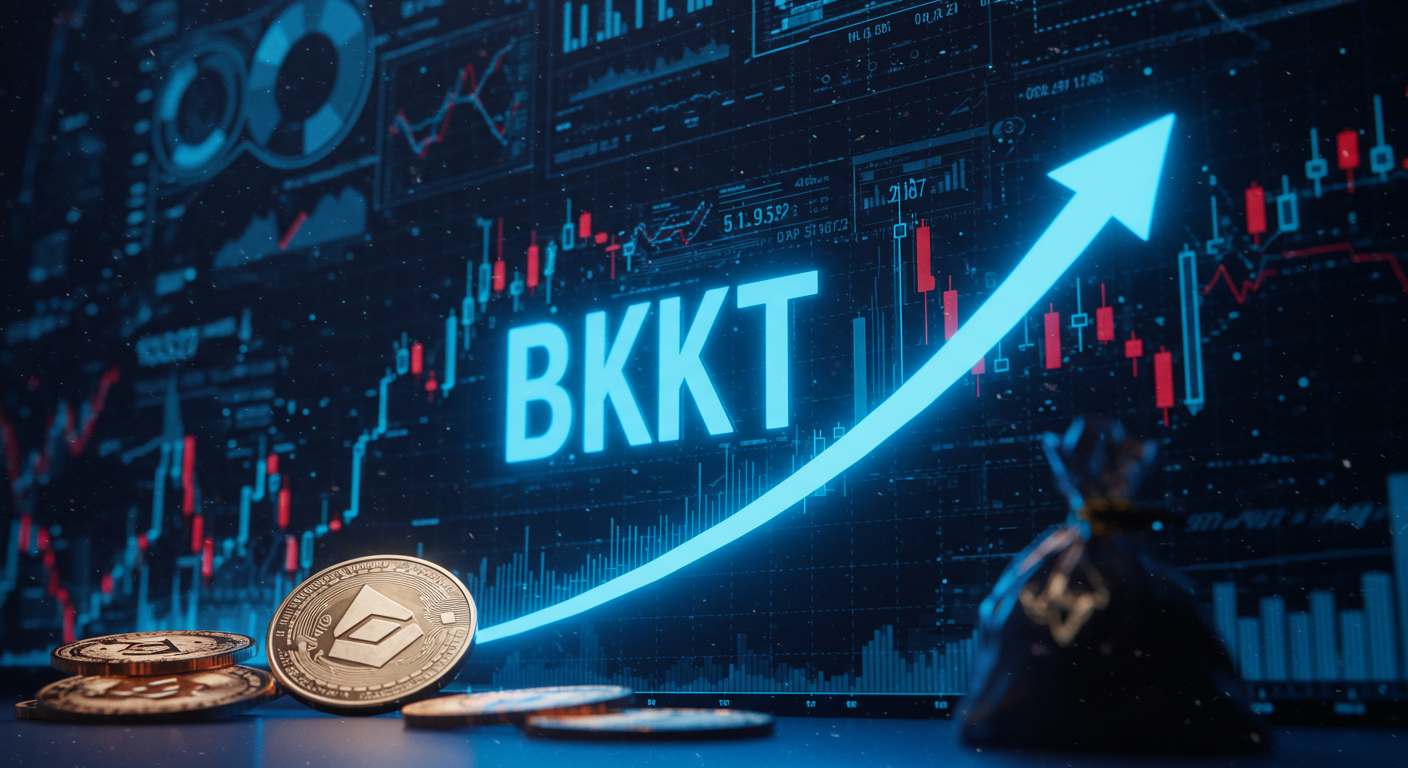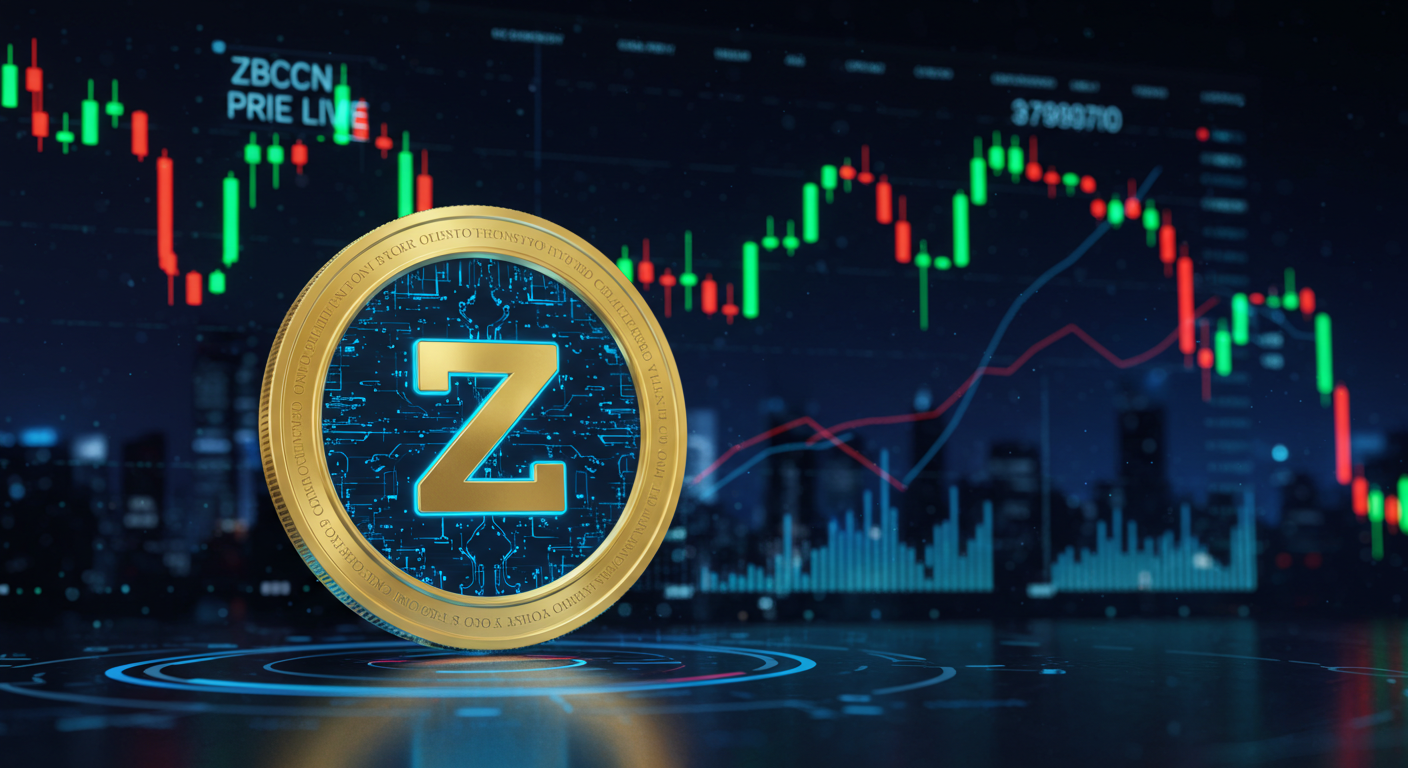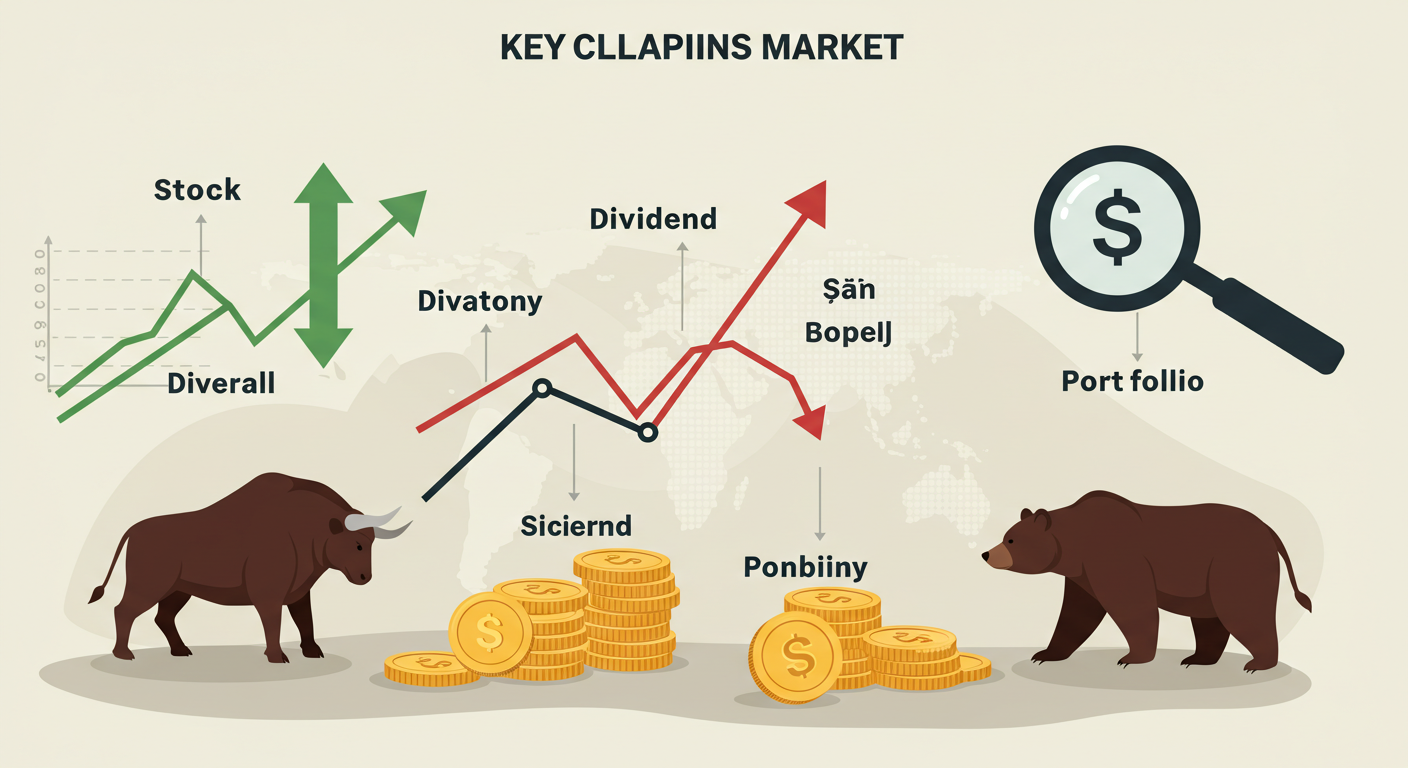Bitcoin halving events change its price. They make Bitcoin scarcer. This guide explains Bitcoin halving charts. It shows real-time prices and cycles. You’ll also find predictions for 2025 to 2028. Let’s make crypto easy to understand.
What Is a Bitcoin Halving?
Bitcoin halving happens every four years. It cuts the reward miners get for adding new blocks. Blocks are like pages in Bitcoin’s digital ledger. This ledger, called blockchain, records all transactions. Halving makes new Bitcoins harder to create. It’s like mining less gold from a mine.
- In 2009, miners got 50 Bitcoins per block.
- After the 2012 halving, it dropped to 25 Bitcoins.
- In 2016, it became 12.5 Bitcoins.
- In 2020, it fell to 6.25 Bitcoins.
- In April 2024, it dropped to 3.125 Bitcoins.
Fewer new Bitcoins mean more scarcity. Scarcity can push prices up. Think of it like rare baseball cards. Fewer cards often mean higher value.
Why Halvings Matter
Halvings control Bitcoin’s supply. Only 21 million Bitcoins will ever exist. By September 2025, about 19.9 million are in circulation. Halvings slow down new coins entering the market. This keeps Bitcoin rare, like gold. Historically, prices rise after halvings. But it’s not instant. It usually takes 12 to 18 months.
Understanding Bitcoin Halving Charts
A Bitcoin halving chart shows price changes over time. It compares prices before and after halvings. These charts help you see patterns. For example, prices often climb after a halving. Then, they may drop in a “crypto winter.” Let’s look at past halvings to understand these cycles.
First Halving: November 2012
- Price at halving: About $12.
- Peak after halving: $1,150 by December 2013 (13 months later).
- What happened: Bitcoin was new. Few people knew it. The halving sparked huge interest. Prices soared but later crashed to $200 by 2015.
This cycle showed Bitcoin’s potential. It also showed its ups and downs.
Second Halving: July 2016
- Price at halving: Around $650.
- Peak after halving: $19,800 by December 2017 (17 months later).
- What happened: More people bought Bitcoin. Big investors joined. Prices surged but fell to $3,200 by late 2018.
This cycle had bigger gains. It also had a sharp drop.
Third Halving: May 2020
- Price at halving: About $8,600.
- Peak after halving: $69,000 by November 2021 (18 months later).
- What happened: Companies like Tesla bought Bitcoin. ETFs (exchange-traded funds) launched. Prices hit new highs but dropped to $16,000 by 2022.
Each cycle shows a pattern. Prices rise after halving, peak, then correct.
Fourth Halving: April 2024
- Price at halving: Around $73,000.
- Current price (September 2025): About $115,873.81.
- What’s happening: ETFs pull in billions. Companies hold Bitcoin as a reserve. Prices are climbing but may dip later.
This cycle follows the same trend. Prices are up since the halving. Analysts expect a peak in late 2025.
How to Track Real-Time Bitcoin Prices
Want to see Bitcoin’s price right now? Use these tools:
- CoinMarketCap: Shows Bitcoin’s price and market data.
- CoinGecko: Tracks prices and trends clearly.
- TradingView: Offers live charts with price history.
- Binance or Coinbase: Check prices on trusted exchanges.
For example, on September 13, 2025, Bitcoin traded at $115,873.81. Prices change fast. Check these sites daily. You can also set price alerts on apps like Blockfolio. This helps you stay updated.
Bitcoin Price Cycles Explained
Bitcoin’s price follows a cycle. Each cycle lasts about four years. Here’s how it works:
- Pre-halving rally: Prices rise before the halving. People expect scarcity.
- Post-halving climb: Prices grow for 12–18 months as supply tightens.
- Peak: Prices hit a high, like $69,000 in 2021.
- Correction: Prices fall, sometimes by 70–80%, in a “crypto winter.”
- Recovery: Prices slowly climb until the next halving.
Charts show this cycle clearly. For example, a chart on Bitbo.io compares cycles. Red dots mark all-time highs. These often come 12–18 months after halvings.
Why Cycles Happen
- Supply and demand: Halvings cut supply. If demand stays, prices rise.
- Investor hype: People buy before halvings, expecting gains.
- Market mood: News, like ETF approvals, boosts prices. Bad news, like bans, hurts them.
Think of it like a roller coaster. Prices climb, peak, and dip. Then, they start again.
Key Factors Driving Bitcoin Prices (2025-28)
Many things move Bitcoin’s price. Here are the big ones:
- Institutional adoption: Big companies like MicroStrategy buy Bitcoin. ETFs hold $148 billion in Bitcoin.
- Regulations: A U.S. Strategic Bitcoin Reserve may start in 2025. This could push prices up.
- Economic conditions: If inflation rises, people buy Bitcoin as a hedge.
- Technology upgrades: Ethereum’s upgrades affect markets. Bitcoin may get updates too.
- Whale activity: Big investors hold 68% of Bitcoin. Their moves sway prices.
These factors shape the 2025-28 cycle. Watch them closely.
Bitcoin Price Predictions for 2025-28
Analysts study cycles to predict prices. Here’s what they say for 2025-28. These are based on history and trends.
2025 Predictions
- Conservative estimate: $145,000 by mid-2025. Based on ETF inflows and halving momentum.
- Average forecast: $180,000–$250,000 by late 2025. Most analysts agree on this range.
- Bullish case: $461,000 by August 2025. Driven by strong institutional buying.
- Key driver: ETF flows and corporate treasuries reduce supply.
- Risks: Volatility or regulatory bans could cause dips.
Late 2025 is the likely peak. A chart from Binance shows a first top 9 months post-halving (January 2025) and a second top around 17 months (September 2025).
2026 Predictions
- Expected trend: A correction may hit. Prices could drop to $80,000–$100,000.
- Why? Cycles show a “crypto winter” after peaks. The 2020 cycle dropped 70% after its high.
- Recovery chance: By late 2026, prices may climb again as the next halving nears.
Prepare for ups and downs. Don’t panic during dips.
2027-28 Predictions
- Long-term view: Prices could hit $300,000–$500,000 by 2028.
- Bullish outlier: Michael Saylor predicts $13 million by 2045. This assumes Bitcoin takes 7% of global wealth.
- Next halving: Around 2028, rewards drop to 1.5625 Bitcoins. This may start a new rally.
Long-term growth is likely. But short-term dips are normal.
Risks to Watch
Bitcoin is volatile. Prices can fall fast. Here are key risks:
- Market crashes: A 2026 “crypto winter” could cut prices by 50% or more.
- Regulations: Governments may restrict crypto use.
- Hacks: Exchanges or wallets can be hacked. Use secure storage.
- Competition: Other coins, like Ethereum, may draw funds.
Stay cautious. Only invest what you can lose.
How to Use Halving Charts
Halving charts help you plan. Here’s how to read them:
- Look for patterns: Prices rise after halvings, peak, then dip.
- Check timeframes: Peaks often hit 12–18 months post-halving.
- Use tools: TradingView or Bitbo.io show clear cycle charts.
For example, a Bitbo.io chart shows price ranges expanding per cycle: $16 in 2012, $1,024 in 2016, $16,000 in 2020. This suggests bigger ranges ahead.
Tips for Beginners
New to Bitcoin? Follow these steps:
- Start small: Invest only what you can lose.
- Use trusted platforms: Try Coinbase or Binance for buying.
- Store safely: Use a hardware wallet like Ledger.
- Track prices: Check CoinMarketCap daily.
- Learn more: Read CoinDesk or follow X posts for news.
Bitcoin is exciting but risky. Research before you buy.
Why This Matters for You
Bitcoin halvings shape its future. Charts show clear patterns. Prices often rise after halvings but later dip. Real-time price tools keep you updated. Predictions for 2025-28 show growth potential. But risks like crashes exist. Use this guide to understand cycles and plan smart.
Also Read: XNC Explained: Origins, Uses & Why XeniosCoin Is More Than Just Another Crypto
Disclaimer: This article is for information only. It is not financial advice. The content is not promotional, not investment advice, and not an affiliate article. Cryptocurrency prices are risky and can change quickly. Always do your own research before making decisions.












Leave a Reply